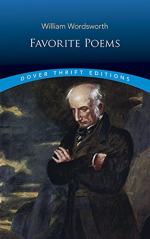|
This section contains 1,067 words (approx. 3 pages at 400 words per page) |

|
The Destruction of Innocence
The speaker uses descriptions of both their childhood self and nature in order to portray the destruction of innocence and how suddenly it can occur.
Early on in the poem, the speaker portrays their younger self as pure and innocent. The youthful day that they recall was “one of those heavenly days that cannot die,” suggesting that not only the memory but also their own being at the time were linked with heaven and purity (3). They also use the words “boyish hope” to describe their mood, and even refer to themselves as “a Figure quaint,” further enhancing this image of the innocent youth (4, 8). This innocence, however, does not last. The urges of desire and hunger that underlie the narrative eventually break through, and the young speaker fully realizes that they are capable of as much evil as they are of good. When they...
|
This section contains 1,067 words (approx. 3 pages at 400 words per page) |

|




